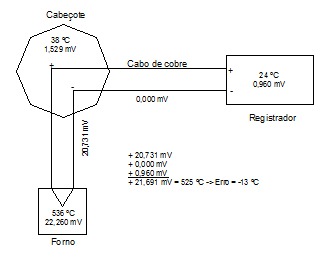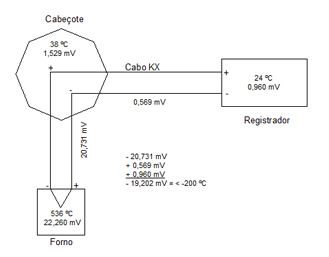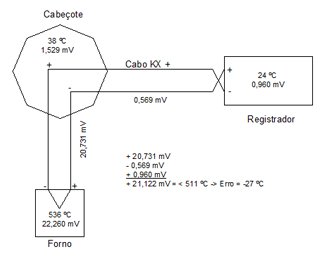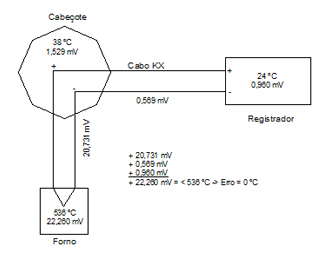Using copper wires : generally , in industrial application, it is necessary that the thermocouple and the instrument find relatively far apart, not agree that the unit is too close to where it measures the temperature .
In this circumstance , it should handle the connection between the head terminal and the device by wire, extension or compensation.
This procedure is performed without problem since the head , where the thermocouple terminals and the logger , is at the same temperature measurement.
Let's see what happens when this rule is not obeyed.

As can be seen in the figure, there is no temperature compensation between the head and recorder .
Simple reversal : according to the following scheme , compensation wires were reversed . It is assumed that the furnace is 538 ° C , the printhead 38 ° C and 24 ° C register. Due to the temperature difference between the head and the recorder, f.e.m. will be generated 0.57 mV. But because of the simple inversion , the positive lead is connected to the negative terminal of the register and vice versa . This will cause the f.e.m. produced along the circuit opposed to that of the automatic compensation of the register circuit , making this register indicates a negative temperature.

Double inversion : In the following case , we consider the existence of a double inversion , this happens frequently, as when a simple inversion is found , it is common to think that a new exchange Terminal connection compensate the error. However, this does not happen , and the only way to solve the problem will make a proper connection.

correct link : Let's see what happens if we use a compensated wire . The figure shows how it handles the installation .





